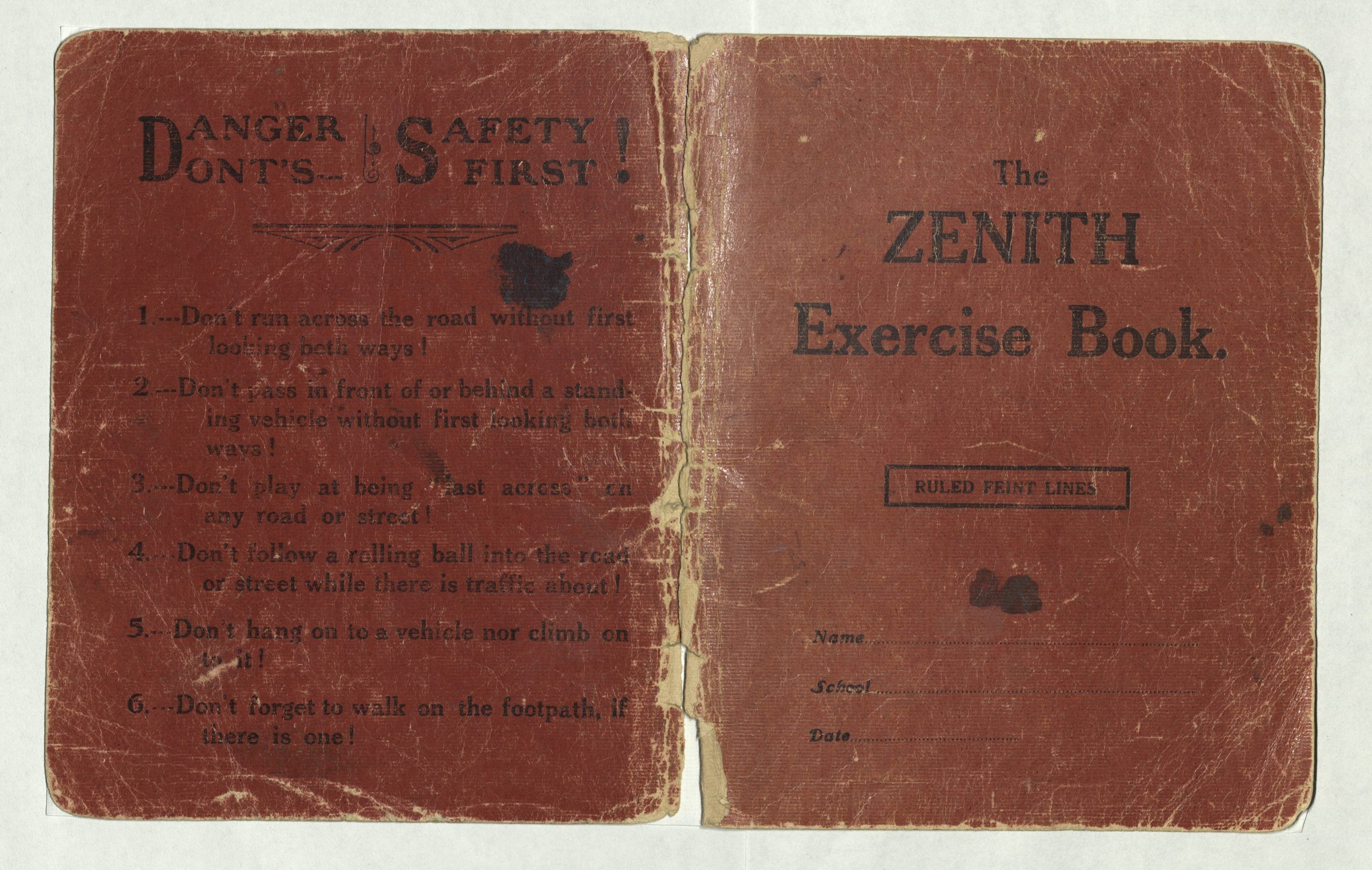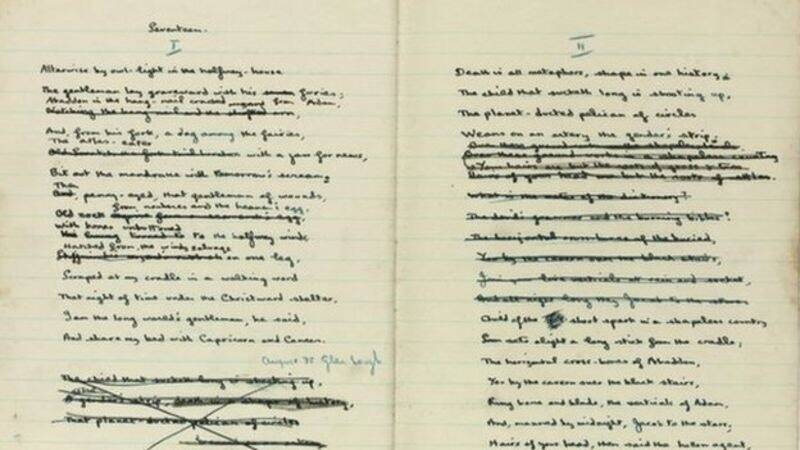The poet Dylan Thomas held on to some of his school notebooks from his youth, and mined their contents for his adult work. For many years, only 4 notebooks were known of, but in 2014 a fifth came to light. John Goodby, the professor who edited it for publication, tells its story in an article at The Conversation.
From April 1930, aged 15, Thomas began copying his completed poems into a series of school exercise books….
In a letter of 1933, Thomas referred to an “innumerable†number of such notebooks. And, unlike most poets, he hung onto his juvenilia, carrying them around with him and raiding them for material until 1941. At that point, in the darkest days of the second world war, hard up and with a family to support, he sold the first four, which run from April 1930 to April 1934, to the library of the State University of New York at Buffalo…..
The fifth notebook’s extraordinary nature as an object is matched by the story of its survival. Two notes contained in the Tesco’s bag in which the notebook was found allowed us to establish this. The first, a brief description by Thomas himself, shows that the last time he was in possession of it was early 1938.
After marrying in summer 1937, [Dylan Thomas] and Caitlin Macnamara lived with Caitlin’s mother at her home in Hampshire until early 1938. The second note – by Mrs Macnamara’s maid, Louie King – revealed that after Dylan and Caitlin’s departure she was given the notebook, with other “scrap paper†they left behind, to burn in the kitchen boiler. King, however, withheld the notebook from its fiery fate – out of curiosity, sentiment, or for some other reason we know nothing about. When she died in 1984 the notebook passed to her family, who kept it, still a secret to the outside world, until 2014.


Read more: Dylan Thomas: ‘lost’ fifth notebook reveals how the great Welsh poet changed his style
